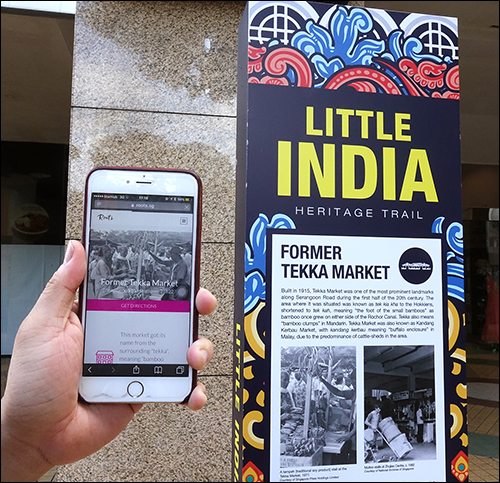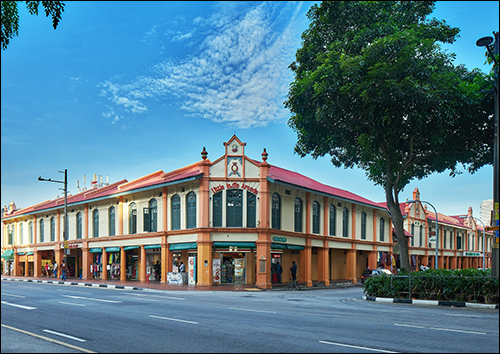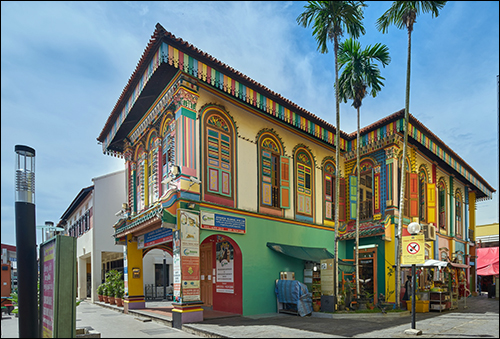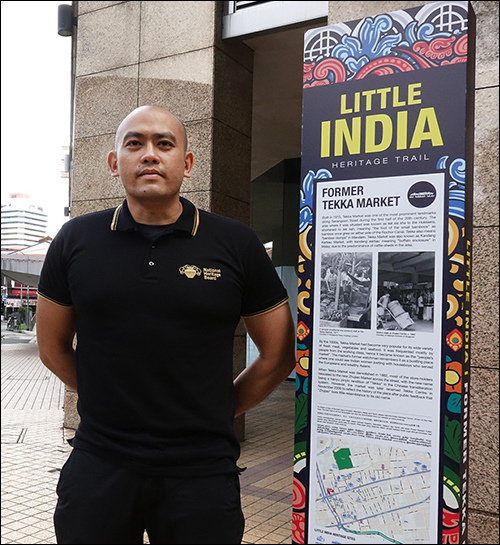Mar 06, 2017Singapore's National Heritage Board (NHB) is piloting Bluetooth Low Energy (BLE) beacon technology to attract the interest of visitors—especially young ones—to the area's history via their smartphones. The Little India Heritage Trail, the latest of Singapore's Heritage Trails, will feature BLE beacons to provide visitors with information about the area, based on their location, on their Bluetooth-enabled phones.
The Little India Heritage Trail spans 4 kilometers (2.5 miles) throughout Singapore's Little India precinct, a historic area which is home to a melting pot of communities and cultures. NHB has established a series of trails—this is the 16th—that cover parts of the city and highlight the area's historic and social features. All trails come with signage “storyboard” markers, an information brochure and maps in English, Mandarin, Malay and Tamil, but NHB has brought technology to the Little India historic sites as well.

The board's missions, says Shaun Wong, NHB's digital manager, are the preservation and sharing of Singapore's diverse communities and their history with residents and visitors. The first heritage trail, known as the Civic District Trail, opened in 1999 as part of the country's national millennium celebrations. "These self-guided trails have become a key staple in our efforts to promote community heritage and ownership," Wong states, "connecting Singaporeans to the areas and their rich heritage."
The Little India Heritage Trail’s beacon system is going live this month, with BLE beacons at 18 markers across all 40-plus heritage sites, detailing the precint's two-century-old heritage. The trail, Wong notes, comes with three different thematic routes: "Serangoon in the 1900s" (presenting historic information from that time period), "Walk of Faiths" (featuring places of worship) and "Shop Till You Drop" (a 30-minute trail that covers the business district).
The BLE technology is designed to make information more interesting to the more digital-savvy generations, or to anyone else with a Bluetooth-enabled smartphone, by bringing content to their phones in the form of text, pictures and videos. It also enables them to share their own pictures at the site with others. The goal, Wong explains, is to bring history and heritage to the next generation.
Users need only have a Bluetooth connection enabled on their phones. Then, as they come within range of a beacon (Accent Systems' iBKS model), they receive a transmission from that device, prompting the phone to access content specific to that location on the NHB's dedicated server, with no app necessary.

"We did not develop any app," Wong says. Instead, she explains, "We found configuring our web content-management system templates to deliver URLs... would be less invasive." The system uses Chrome's widget to scan for beacons, Wong adds, and since Chrome is available for both iOS and Android, "visitors simply need to set up their mobile devices once and be able to access all 18 sites on the Little India Heritage Trail."
The user is then invited to select the content to view it. Content includes information about an historic mosque in the early 20th century, along with a church from the same era. A Mahatma Gandhi memorial has a marker that links it to content about the former Indian leader, while other content is available regarding a Buddhist temple, and Hindu temples, as well as a former horse-racing track, a market, a hospital and a former school.
Trail visitors receive exclusive content in the form of "lesser-known facts," Wong says, in addition to other content and images, including crowd-sourced content from visitors to Little India. "This is beyond what can be [printed] within the physical space of each heritage marker," he states, "and allows us to enhance our visitors' understanding of Little India."
Not only does the mobile page provide more information about the sites, but it also helps users identify other nearby heritage markers. Additionally, it provides simple directions to help them reach their next destination.
The beacons provide analytic data for NHB as well. For instance, the organization can view how often beacon transmissions are received, where and when this occurs, and how often content is viewed, based on mobile phone responses. "We hope this pilot will minimally allow us to understand how many times the additional information was accessed by visitors," Wong says, "and potentially the time spent by visitors reading the physical web pages."
NHB will use the data analytics to gain insight into whether the technology should be provided at other heritage places, Wong says. As the pilot proceeds, the organization plans to review the public responses to it before making any decisions regarding whether or not to implement it for other heritage trails.


